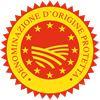Description
The Barèges-Gavernie PDO is obtained from adult ovine (sheep or mutton, this last called Doublon) belonging exclusively to the Barégeoise breed. Production method: Appearance and flavour:
Production Area
The production area of Barèges-Gavernie PDO includes different municipal areas of the department of Hautes-Pyrénées in the Midi-Pyrenees region.
Production Method
the animals are raised in the respect of the natural rhythm of seasons, following four main phases: in winter (from the 1st November to the 31st March), the flock lives in sheepfolds near villages; in the intermediate seasons (spring and autumn), they stay in midmountain areas; finally, in summer (from May to October, compulsory from the 15th June to the 31st August for the entire flock), the animals are brought to high mountain pastures (1500-2800 metres of altitude) and graze freely day and night. The nurture consists exclusively of pasture; only in winter, hay and second cutting (August) can be used. Every flock must include almost a tup per 50 sheep, 20% of muttons and 30% of stud sheep compared with the total number of the sheep. The sheep have a various age from two to six years, while Doublons are older than 18 months. Once butchered, they must weigh respectively at least 22 kg and 23 kg.
Appearance and Flavour
Barèges-Gavernie PDO lamb features long and flat legs, bright and brilliant red colour. The coating fat is glaze white, with a few fat parts. The smell is not as strong as that of the mutton meat or of its fat.
History
The history of Barèges-Gavernie PDO is strictly linked to the specific features of Barégeoise breed, which is exclusive in the geographic production area and is perfectly suitable for the breeding techniques and the environmental and weather conditions. Indeed, the region is characterized by strong environmental constraints, which brought the farmers to develop over the years pastoral practises able to utilize in the best way the vertical organization of vegetation: using the valley line in winter, the intermediate height in spring and autumn and summer meadows. Over the time, this sustainable breeding system has become an efficient mean to protect the environment.
Gastronomy
The Barèges-Gavarnie PDO can be conserved for a few days in the refrigerator, wrapped into the purchasing paper and stored in the coldest compartment. The cooking methods vary depending on the specific meat cut. Once chosen, condiment is added; to this regard it is better to avoid an excessive use of oil or butter, which would make heavier a meat which is fat. Grilled cutlets are especially tasteful, with oil and seasoned with pepper. The herbs traditionally used to flavour the meat are rosemary, mint and wild fennel and mirth, thyme, Savoy cabbages and aubergines. To fully appreciate its taste, these meat must be underdone and served hot.
Marketing
The product is sold as Barèges-Gavarnie PDO, sometimes accompanied by the indication Doublon for meat coming from muttons. It is marketed fresh, whole without head, or in slices packed in trays with protected atmosphere which guarantees a longer conservation and keep unaltered its organoleptic features and its flavour.
Distinctive Features
The high quality of Barèges-Gavarnie PDO meat is due to the very accurate farming techniques used. In addition to pasture, slaughtering must respect specific rules like the duration of the transport to the butchery which must be done within one hour and the slaughtering which must occur within the 15 following hours to guarantee a good treatment of the animals and to avoid them too much stress.






